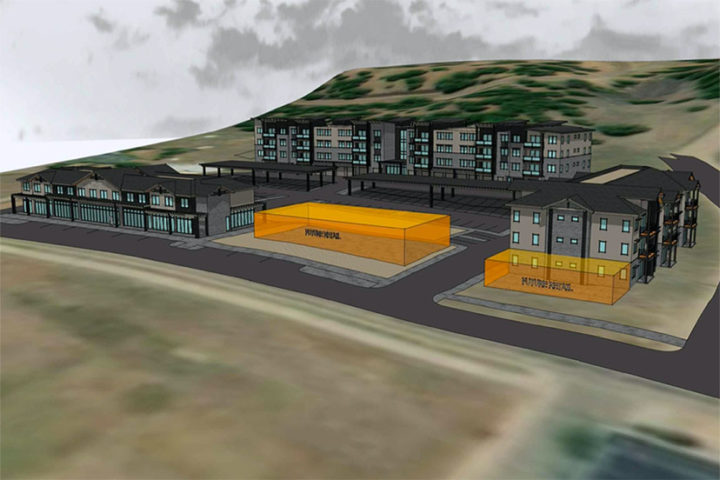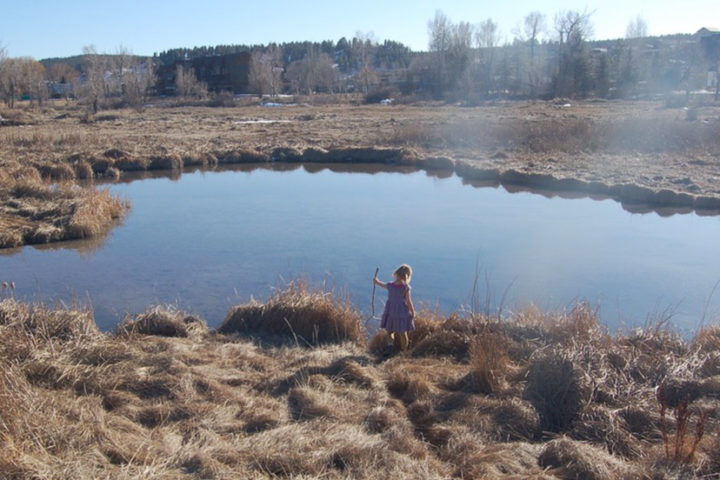I watched the Roy Rogers version of ‘Don’t Fence Me In’ — performed in 1944 at the real-life Hollywood Canteen as a morale booster for American service men and women during the difficult final months of World War II. The Hollywood Canteen was founded by Bette Davis and John Garfield, as a place where military personal were ‘the stars’, and Hollywood’s finest served them… as bartenders, waiters, bus boys, and dance partners…
…and, sometimes, entertained them.
The Roy Rogers video clip was a bit painful to watch… not because of the song, which was expertly rendered by Roy and the Sons of the Pioneers… but because much of the video involved Roy’s famous horse, Trigger, acting in ways that looked, to me, unnatural for a horse.
I’ve always experienced mixed feelings, when watching trained animals perform. Especially when a make-believe cowboy is sitting upon the animal, and singing about wide open spaces.
There are also moments when Town Planning Commission meetings are painful for me to watch, although fortunately no trained animals are involved. (Typically.)
I gave a quick summary yesterday of the “Hot Springs Mixed Use Development” proposed for Hot Springs Boulevard, and which was discussed at Tuesday’s Planning Commission meeting. The mixed-use project has been designed for a 4-acre parcel immediately north of the new Rose Mountain Townhomes low-income housing project. Much of the conversation during this “Sketch Design Review” focused on parking and pedestrian access, how drainage and snow removal might function, and certain architectural details that Planning Director James Dickhoff had concerns about.

For the past 10,000 years, (as far as we know,) this particular plot of land has been undeveloped. In its natural state, rain and snow were of no concern to anyone. The rain fell, and the snow melted, and the water soaked into the ground to recharge the various aquifers that underlie the rural town we know as Pagosa Springs.
In fact, throughout most of downtown Pagosa Springs, rain and snow has not posed a big problem, historically speaking. (The 1911 flood that destroyed or damaged 60 homes and took out every bridge across the San Juan River, would be the obvious exception to that rule.) Rain and snow doesn’t pose a problem, because we — the residents — have avoided paving our properties with asphalt, and thus making them impervious to water and creating drainage issues.
But asphalt and impervious surfaces have become a development standard in the Town’s Land Use and Development Code (LUDC). So when a developer like Mr. Stephen DeRosa of Brooklyn, NY, wants to build three buildings on a four-acre parcel, it’s an accepted fact that the Town government is going to require perhaps 80% of the exposed land to be covered with impervious surfaces, thus creating a four-acre drainage/pollution problem that now needs to be solved.
Here, for example, is a drawing of the ‘Hot Springs Mixed Use Development’ as presented to the Planning Commission. Three new buildings, and a great deal of automobile parking, in a town that professes to encourage pedestrian transportation and a low-carbon footprint.

Below, is a colorized version of that same drawing, showing the amount of the four-acre property that will be paved or developed in a manner impervious to water, and therefore contributing to drainage problems.

The generally accepted way to address these government-sponsored drainage/pollution problems, in Pagosa Springs, is to require some kind of ‘storm water retention pond’ on the property.
In the case of Mr. DeRosa’s ‘Hot Springs Mixed Use Development’, it would appear that the ‘detention pond’ — shown below, in turquoise — will probably take up a chunk of the property large enough for an 18-unit apartment building.

Not everyone thinks this is crazy, apparently. But some do.
Two and a half years ago, the Rose Mountain Townhomes brought forward their plans for a 34-unit apartment complex on Hot Springs Boulevard, and included a similar ‘storm water retention pond’ as part of their 2 1/2 acre development.
The Planning Commission engaged in a brief discussion — two and a half years ago — about the fact that most cities in America deal with storm water in a very different manner, by including an underground storm water management system when they construct their streets and roads. Instead of having each building or development create its own ‘retention pond’, the homes and commercial buildings direct storm overflows into the shared municipal system.
The Planning Commission had seemed (to me?) to be on the track of a very valuable idea — a municipal storm water management system for Hot Springs Boulevard, the street that runs through the vast undeveloped core of the downtown community. It had seemed (to me) that this idea could be nearly as potent, and important, to Pagosa’s future as the municipal sewer system was, back in the 1960s, or as the fire protection district was in the 1970s.
But it’s now two and a half years later… and as far as I can tell, the Town Planning Department has done nothing to bring this valuable idea to fruition — even though the Town is planning to finally finish constructing Hot Springs Boulevard, after leaving it half-finished for 20 years.
So here we were, on January 25, 2022, listening to proposals from Mr. DeRosa and his architect and engineer — and also from Springs Resort principal David Dronet and his team of architect and engineers — discussing storm water treatment options and other water-related issues.
The storm water issues facing Mr. DeRosa are significant. But the water issues facing our community in connection with the Springs Resort’s proposed expansion — an 80-unit hotel, restaurant, spa, and perhaps 25 new geothermal bathing pools — are even more dramatic, because they relate directly to one of the only warm-water wetlands left in the State of Colorado.

Some people — without really thinking too deeply about it, perhaps — consider tourists to be more important than animals, to life in Pagosa Springs. Of course, as we all know, tourists arrive with money in hand… and our birds, insects, reptiles, amphibians, and mammals do not. Nor do our trees or forbs or grasses or shrubs or aquatic plants typically carry cash.
There are other people here in Pagosa, however, who believe that Nature and its abundance ought to be protected from destruction. A few of them were present at the January 25 Planning Commission meeting…

